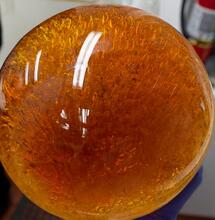How Possible is for Police to Smell Cannabis in Your Car

Researchers found that people can’t smell marijuana packed in double vacuum-sealed bags. Someone would still argue that this depends on the quality of the bag and the ability of the human nose to identify marijuana.
The chances are that you've googled something like this when you were pretty stoned with your friend on a regular Friday night. With an amplified police patrol these days, this is quite a logical and common question. Does police really have the sense to smell weed?
Well, we do not encourage you to distribute a large amount of marijuana in your car, but to answer your question: someone did, got caught, and read further if you want to know what actually happened.
The Story in a Nutshell
To make the long story short: it is unlikely that 52 pounds of cannabis put in a car trunk wouldn’t smell, but a study inspired by an actual arrest and seizure of a considerable amount of tightly sealed cannabis suggests it’s possible. And you can assume, for this type of a deal, you need to sell your soul to the Devil. Or maybe his attorney. Although the study tested two ounces of weed instead of over fifty pounds, the results could alter the way defendants fight police searches based on the “in plain smell” doctrine. The study published in the March 2020 issue of Science & Justice, in fact, does not reveal anything extraordinary: two researchers found that people can’t smell marijuana packed in double vacuum-sealed bags. Someone would still argue that this depends on the quality of the bag and the ability of the human nose to identify marijuana. But the better the bag quality, the lower the chances of weed being smelled. And the less suspicious you physically look, the lower the chances of you being caught.
The Plain Smell Doctrine
“In plain smell” is a common-sense law enforcement doctrine that allows police to search property if they detect something suspicious, and that includes the odor of marijuana. This becomes a real problem not only for marijuana dealers but in particular for those who have a little bit more in these times of crisis. It could explain why police patrols are becoming a more familiar image through US roads. Luckily, marijuana laws are perpetually changing, so these smell-based searches are getting challenged in courts across the country.
Do You Think All of Them Can Smell Weed? Or They Just Want a Piece from the Cake?
The US Supreme Court has a rule that an officer can stop the vehicle if there is a legitimate reason. Here, the officer has a strong alibi: any minor offense can lead to the plain smell doctrine. This is where prejudice is born: unconscious or, even worse, the conscious one. Although Colorado is considered one of the most liberal countries in the U.S, this extraordinary story comes from there. Let’s reconstruct this story one more time (similarly as it was in the Court). It all happened in 2017, and it looks pretty much like a scene from a Fargo TV show. A police officer stops Billy (the name has been changed for the sake of privacy), referring to the plain smell law doctrine. Billy did a minor offense - he was just driving a bit faster after a long day at work. The plot thickens when our officer-hero, who stopped and searched Billy, noted in his report that he can actually smell the weed. After all, he is a member of the police squad included in the highway narcotic section, and he has a nose for these things. Truth be told, he did reveal a rubber-banded wad of thousands of dollars in cash, an extra cell phone, and some good 52 pounds of weed stuffed in two duffle bags. This is automatically possession for distribution. Add to this the improper speed.
The Devil's Advocate
You would never guess who stood up for our Billie. The defense went a step further in their approach and asked for Dr. Avery Gilbert, an odor specialist, and Dr. Joseph DiVerdi, a chemist at the Colorado State University, to scrutinize the evidence at a state police station. You can only imagine the entertainment of two highly respected university professors when they had to face an exhibit table full of bagged weeds. What is more fascinating is that the odor specialist could not smell the weed. What did they examine? First, they took air samples from inside the evidence bags that held the vacuum packs, and then, they extracted a sample from the confiscated duffle bags with marijuana. These samples were needed to determine what really smells. After the laboratory examination, they analyzed terpenes concentrations, the chemical compounds that produce the marijuana smell. They used a gas chromatography machine to run the samples in order to distinguish and examine the compounds. In the confidential report that hasn’t seen the day, because the case did not have a public trial, it is stated that the terpene levels were all too low to be detectable by people. Yes, Billy won. To be more precise, according to court records, he was only pleaded guilty to possession with an intent to distribute, getting a two-year deferred sentence where jail time is suspended subject to probation as well as a $13,500 fine and 48 hours of community service.
The Scientific Proof
Like a true detective, the two scientists did not give up. Gilbert and Verdi set out to test the human olfactory ability to smell marijuana in a laboratory setting. This is revolutionary in some aspects because it offers a new type of defense against specific plain smell searches, as would be a pack of weed in double vacuum-sealed plastic, which apparently seals the smell pretty well. An experiment was set up with a forced paired choice. Participants were invited to smell the two samples and asked to choose the one that was packed with weed. Two different strains of marijuana were used for the effort, a citrusy pungent strain and an herbal funky one. The strains were put in four packing methods based on real-life examples: Ziploc bags, thin plastic produce bags, pop-top canisters, and a vacuum-sealed heavy plastic bag inside another vacuum-sealed bag. They also tested an open bowl with marijuana as a baseline. After filling the packages with marijuana, they left them in large buckets for an hour to let the odor accumulate and then asked the study participants to smell and choose. The results: the open glass bowl, the Ziploc bag, and the produce bag were all immediately identified by all of the participants. It was not hard to recognize the odor in these bags. The vacuum-sealed samples proved to be a problem for the participants. If this was hard or almost impossible in the laboratory examinations, what are the odds that a police officer could smell double-sealed marijuana inside a bag or a suitcase in a closed trunk, outside a car on a highway? You must admit, a person must have a nose for these things! Or you just had to roll one in the car before hitting the highway?



